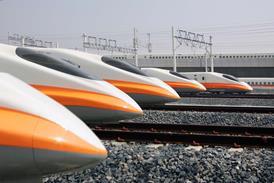Škoda showcases onboard safety and automation technology
By Metro Report International2023-09-26T05:00:00

CZECH REPUBLIC: Škoda Group showcased its onboard technology for rolling stock at the Trako trade fair in Gdańsk on September 20.
Already have an account? LOG IN
To continue…
You’ve reached your limit of content for the month
Get enhanced access to Railway Gazette news and weekly newsletters.

For almost 200 years, the Railway Gazette Group has been the leading provider of news, analysis and intelligence for the international railway industry. Our independent and authoritative content is read by operators, regulators and the supply industry in over 140 countries using a variety of tailored subscription packages.
Site powered by Webvision Cloud



